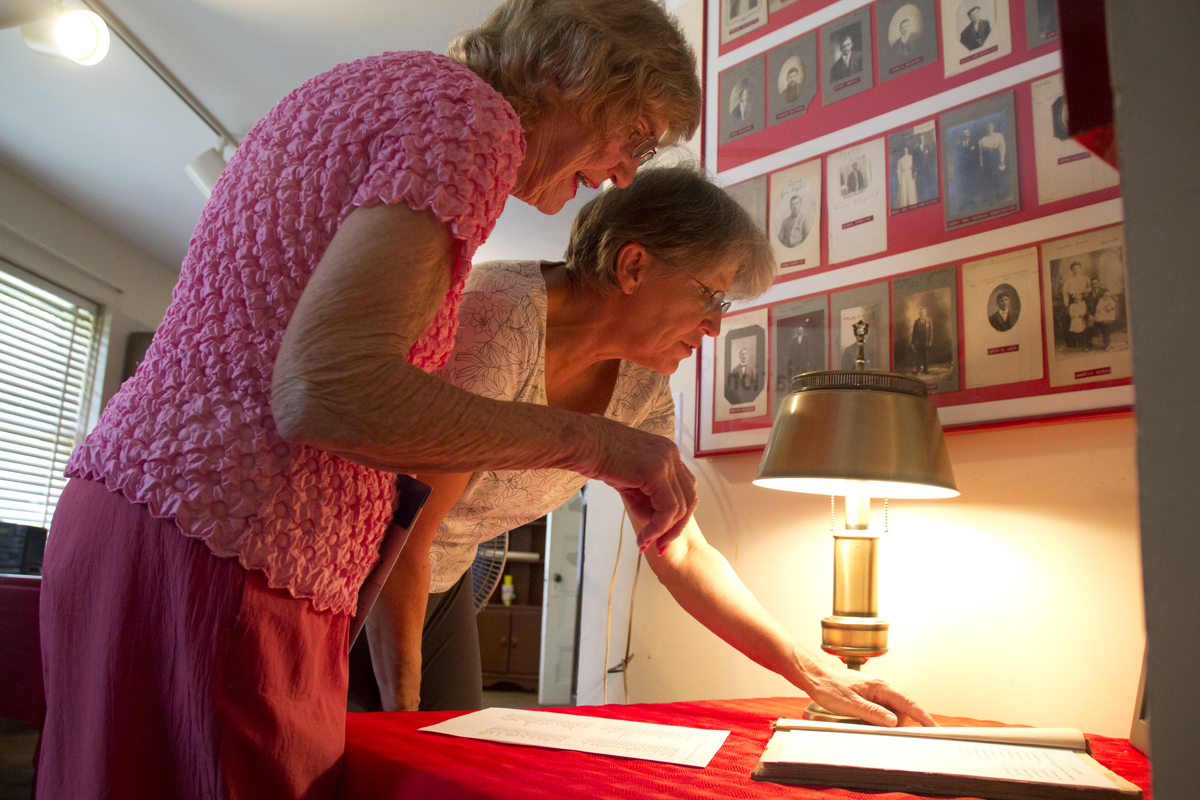Polish Town civic revives immigration exhibit for upcoming fair

The last time the Polish Town Civic Association set up an exhibit to recognize the histories of local Polish immigrants, the organization used a state grant to hire a museum planner to help, said civic organizer Irene Pendzick.
The exhibit area first debuted back in Aug. 1990, but the museum area of the civic association headquarters was later converted into a storage area after Ms. Pendzick was unable to continue the project.
For the 40th Annual Polish Town Fair this month, the organization has decided to bring the exhibit back, and recruited Ms. Pendzick and a few other local women to recreate the tiny museum.
“It’s been harder than it was the first time,” Ms. Pendzick admitted. “We have no budget to speak of.”
Part of the exhibit is a selection of more than 100 old photographs of Polish immigrants collected by the Riverhead Savings Bank from the late 1800s to early 1900s.
Riverhead’s surging immigrant population created the area now called Polish Town around that time, with many of the farming families building St. Isidore’s Roman Catholic Church in 1906. During that time, Ms. Pendzick said, few families could speak English well enough to secure bank loans.
To keep track of the many immigrants, the English-speaking bankers took photographs of their customers and jotted down names for each one — or, at least, a phonetic spelling of the names. Ms. Pendzick said the photos were discovered after the bank closed and was being cleared out.
The collection of photos were piled on the scrap heap, she said. The Civic Association has set up five frames organizing the photos for the exhibit.
“We show how some bought farms,” she said. “We show how some became naturalized Americans citizens.”
The exhibit will also include a list of prominent Polish-Americans, both locally and nationally. Small printouts tacked to posterboard detail the accomplishments of locals like Ed Danowski, who went on to play football for the New York Giants, and Dr. Peter Zuhoski, who helped to establish Long Island’s first Little League.
“I feel it tells such a good story about a group of people who don’t have opportunities to tell their stories,” Ms. Pendzick said.
The group was hard at work Monday afternoon in the humid hallway where the exhibit is being displayed, dusting the window sills and making sure the correct documents were prepped for the fair-going crowds.
A crackling CD of Mazowsze, a famous Polish folk band, blared out of an aging boombox set on a table as the women worked. Volunteer Anelia Kobylenski supplied the music.
“We’re reorganizing with some of the same people and it’s a wonderful project,” Ms. Kobylensi, the daughter of Polish immigrants, said. “We were brought up to be great Americans, but we never forget what our family left behind.”



